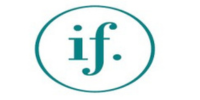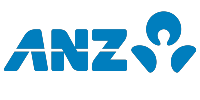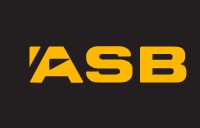Compare online loans
Looking for an online loan in New Zealand? This guide helps you compare options, while explaining the risks, common traps, and smart alternatives to borrowing.

The breakdown
- Not all online loans are created equal — check that the lender is legitimate, transparent, and follows NZ regulations before you apply.
- Online loans can be fast and convenient, but high interest rates and fees mean they’re best suited for short-term, essential borrowing.
- If you’re unsure whether borrowing is the right move, consider safer alternatives like hardship support, credit unions, or structured payment plans.
Online loans can be a quick and convenient way to access money when you need it. But not all lenders play fair — and borrowing more than you can afford can quickly lead to long-term debt.
In this guide, we break down how online loans work in New Zealand, how to find a legitimate lender, and how to avoid costly pitfalls. We’ll also look at safer alternatives if a loan isn’t the right choice for you.
What are online loans and how do they work in NZ?
Online loans are simply personal loans that you apply for entirely over the internet. Whether you’re on a desktop or mobile, the process is designed to be fast, accessible, and straightforward.
How they work:
- Application: You fill out a digital form with your personal and financial details. Some lenders may ask for supporting documents like bank statements or proof of income.
- Assessment: Lenders use automated systems to assess your application. This can take anywhere from a few minutes to several hours.
- Approval and payout: If approved, the money is typically transferred to your bank account within 24–48 hours. Some providers offer same-day payouts.
Key features of online loans in New Zealand:
- Available 24/7: You can apply any time, including weekends and public holidays. You will almost certainly have to wait until a working day for the application to be reviewed, but the application can be done at any time
- Fast decisions: Many lenders offer instant or same-day approvals.
- Paperless process: No printing or mailing required.
- Flexible loan sizes: You can borrow as little as a few hundred dollars, or up to $50,000 (depending on the lender).
Online loans often appeal to people who:
- Need money quickly for an emergency expense.
- Have limited access to traditional banks or credit unions.
- Struggle with poor or limited credit history.
Important to know
All online lenders operating in New Zealand must follow the same legal rules as traditional lenders. That includes providing clear loan terms, being upfront about all fees, and ensuring the loan is affordable for the borrower.
But while many online lenders are reputable, others are not. This guide will help you tell the difference, and decide whether borrowing is really the right move for you.
Are online loans safe and legit in NZ?
Online loans can be safe, but only if you borrow from a legitimate, responsible lender. New Zealand has laws in place to protect borrowers, but the online lending space still includes high-cost, high-risk providers that don’t always act in your best interest.
Regulations that protect you
All lenders in New Zealand, including online-only ones, must follow the Credit Contracts and Consumer Finance Act (CCCFA).
That means they’re legally required to:
- Be transparent about interest rates and fees
- Check that the loan is affordable for you before approving it
- Cap total interest and fees at 200% of the original loan (e.g. borrow $2,000, and you can’t be charged more than $4,000 total)
These protections are important, but they don’t stop some lenders from pushing expensive loans to vulnerable borrowers. That’s why it’s essential to do your own checks before borrowing.
How to check if a lender is legit
Start by confirming the lender is registered with New Zealand’s Financial Service Providers Register (FSPR) — this is a legal requirement. Reputable lenders will also have clear, transparent loan terms and provide contact details, including a physical address.
It’s a good idea to read independent reviews to see how others have been treated. And always make sure the lender’s website is secure. Look for “https” in the URL and a padlock icon in your browser.
Watch out for these red flags
Be especially cautious if the lender:
- Promises approval without checking your income or credit history
- Charges extremely high interest or hidden fees
- Pressures you to borrow more than you need
- Doesn’t display a physical address or contact details
Compare online lenders
Here’s how some of New Zealand’s most popular online lenders compare on key features like interest rates and fees.
| Lender | Interest rate (p.a.) | Loan amount | Terms | Establishment fee | |
|---|---|---|---|---|---|
 Instant Finance
Instant Finance
|
9.95% - 29.95% | $500 to $50,000 | 3 months to 7 years | From $100 to $220, depending on amount. | |
 Rhino Solutions
Rhino Solutions
|
21.90% - 29.20% | $1,000 to $20,000 | 3 months to 5 years | From $150 to $475, depending on amount | |
 ANZ
ANZ
|
13.90% | $3,000 to $50,000 | 6 months to 7 years | $0 | |
 ASB
ASB
|
13.90% | From $2,000 | 6 months to 7 years | $99 | |
 Westpac
Westpac
|
13.90% | Up to $50,000 | 6 months to 5 years | $0 | |
 BNZ
BNZ
|
12.65% | $1,000 to $30,000 | 3 months to 5 years | $50 |
Easiest online loans to get approved for
When you need money quickly, it’s natural to look for an online loan with fast approval and low barriers. And while some lenders do offer simpler application processes, it’s important to understand what “easy approval” really means, and the trade-offs that often come with it.
What makes a loan easier to get?
Online lenders that approve applications quickly tend to look at fewer factors than traditional banks. Instead of deep credit checks or long paperwork trails, they may assess recent bank activity, income stability, or even offer loans without checking your credit score at all.
This convenience is especially attractive to people with a limited credit history, low credit scores, or irregular income, but it usually comes at a price. The easier it is to get approved, the more expensive the loan is likely to be.
The cost of easy approval
Many “easy” loans fall into the category of high-cost, short-term lending. These loans often have annual interest rates over 20%, with some significantly higher. Missed payments can trigger steep penalties, and it’s not uncommon for borrowers to end up trapped in a cycle of debt when they can’t keep up with repayments.
In other words, the easier a loan is to get, the more carefully you need to assess whether it’s truly affordable and whether you have a realistic plan to pay it back.
How to improve your chances safely
If you’re concerned about approval, there are still ways to boost your chances without resorting to risky lenders. You might:
- Apply for a smaller loan amount
- Choose a longer loan term to reduce weekly repayments
- Provide recent payslips or bank statements to show stable income
- Consider a secured loan if you have an asset (like a car)
Some lenders also offer pre-qualification tools that let you check your likelihood of approval without affecting your credit score.
A final word of caution
Be especially cautious of lenders that promise guaranteed approval or “instant” large loans with no checks. These are often red flags for predatory practices. If a loan sounds too easy to get, especially with vague terms or limited information, take a step back and look for alternatives.
Alternatives to online loans
Before committing to an online loan — especially one with high interest or strict repayment terms — it’s worth exploring whether borrowing is truly your best option. Depending on your situation, there may be more affordable or lower-risk alternatives available.
1. Hardship assistance and government support
If you’re facing unexpected costs or struggling to make ends meet, support may be available through Work and Income New Zealand (WINZ). You could be eligible for a benefit advance, emergency housing support, food grants, or other short-term assistance, none of which require interest payments or commercial approval processes.
Budgeting services like MoneyTalks also offer free, confidential advice on managing debt, negotiating with creditors, and planning your finances.
2. Credit unions and community lenders
Unlike big banks or payday lenders, credit unions and community finance providers often offer personal loans with lower interest rates and fairer terms, especially for people with modest incomes. These organisations are often more flexible and mission-driven, focusing on financial inclusion rather than profit.
One example is Ngā Tāngata Microfinance, which offers small, interest-free loans to help people cover essentials or consolidate debt.
3. Overdrafts or instalment plans
If your need is short-term, talk to your bank about temporary overdrafts or structured repayment plans. These can often be set up quickly and may have lower fees than a new loan.
Some utility companies and service providers also allow you to spread payments over time — for example, for power bills, car repairs, or medical costs — which can reduce the need to borrow.
4. Credit cards (used carefully)
While not ideal for everyone, a credit card can be a safer option than a high-cost online loan — if you can repay the balance quickly. Some cards offer interest-free periods of up to 55 days, which may give you the flexibility you need without incurring large fees. Just be sure to pay off the full amount before interest kicks in.
See our credit card comparison guide for more.
5. Asking for help
It’s not always easy to talk about money, but in some cases, asking a trusted friend or family member for a small, interest-free loan or short-term support can be a smarter option than signing up for an expensive financial product. Just make sure you’re clear about repayment and expectations to avoid misunderstandings.
